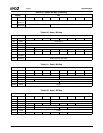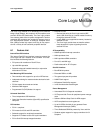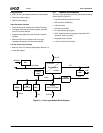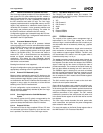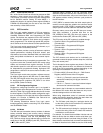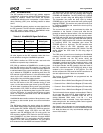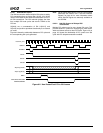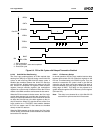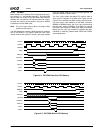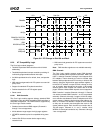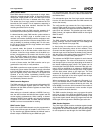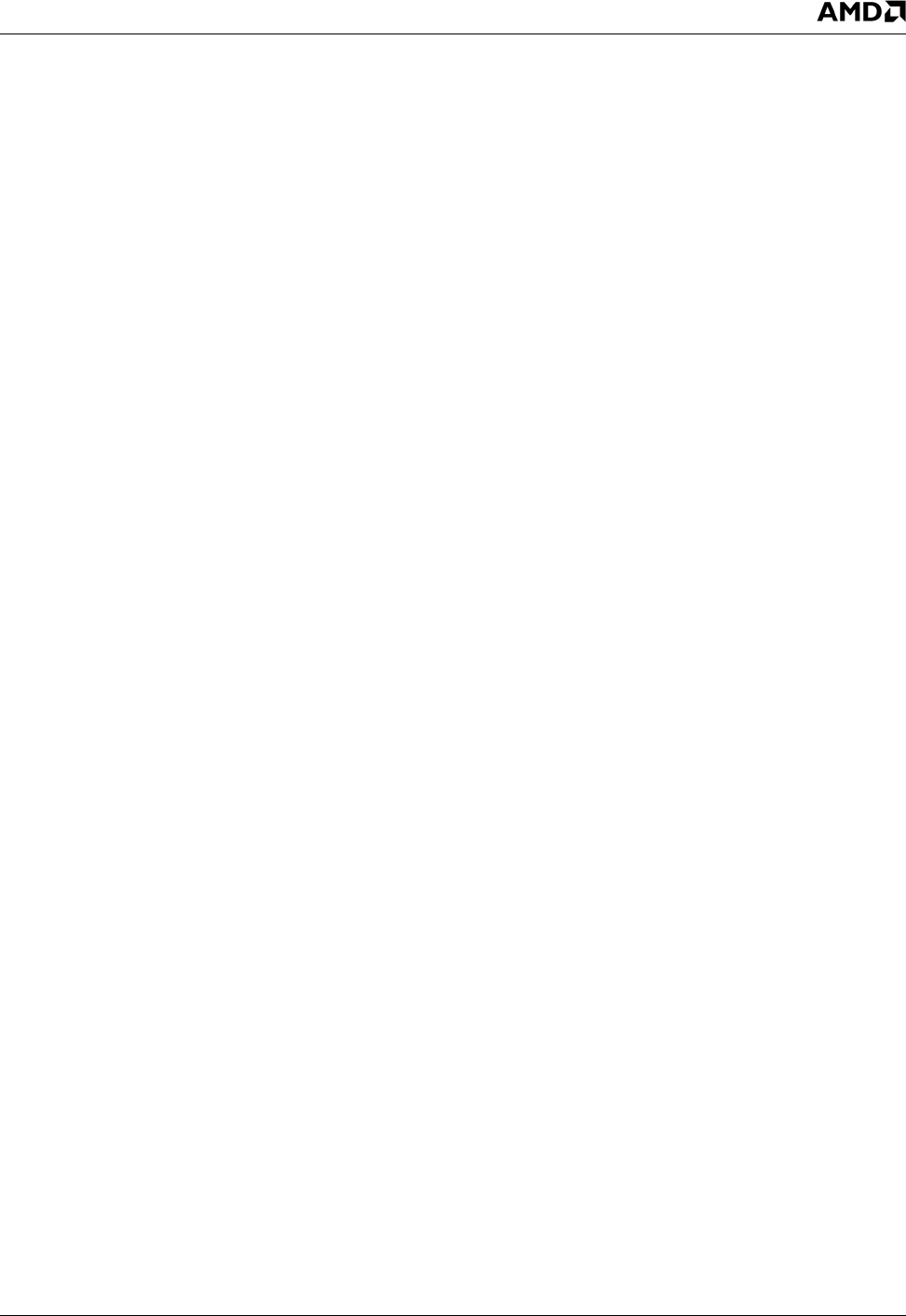
AMD Geode™ SC2200 Processor Data Book 155
Core Logic Module
32580B
6.2.4 Universal Serial Bus
The Core Logic module provides three complete, indepen-
dent USB ports. Each port has a Data "Negative" and a
Data "Positive" signal.
The USB ports are Open Host Controller Interface (Open-
HCI) compliant. The OpenHCI specification provides a reg-
ister-level description for a host controller, as well as
common industry hardware/software interface and drivers.
6.2.5 Sub-ISA Bus Interface
The Sub-ISA interface of the Core Logic module is an ISA-
like bus interface that is used by SC2200 to interface with
Boot Flash, M-Systems DiskOnChip or NAND EEPROM
and other I/O devices. The Core Logic module is the
default subtractive decoding agent and forwards all
unclaimed memory and I/O cycles to the ISA bus. However,
the Core Logic module can be configured to ignore either
I/O, memory, or all unclaimed cycles (subtractive decode
disabled).
Note: The external Sub-ISA bus is a positive decode bus.
Unclaimed memory and I/O cycles will not appear
on the Sub-ISA interface.
The Core Logic module does not support Sub-ISA refresh
cycles. The refresh toggle bit in Port B still exists for soft-
ware compatibility reasons.
The Sub-ISA interface includes the followings signals in
addition to the signals used for an ISA interface:
• IOCS0#/IOCS1#
— Asserted on I/O read/write transactions from/to a
programmable address range.
• DOCCS#
— Asserted on memory read/write transactions from/to
a programmable window.
• ROMCS#
— Asserted on memory read/write to upper 16 MB of
address space. Configurable via the ROM Mask
register (F0 Index 6Ch).
• DOCR#
— DOCR# is asserted on memory read transactions
from DOCCS# window (i.e., when both DOCCS# and
MEMR# are active, DOCR# is active; otherwise, it is
inactive).
• DOCW
— DOCW# is asserted on memory write transactions to
DOCCS# window (i.e., when both DOCCS# and
MEMW# are active, DOCW# is active; otherwise, it is
inactive).
• RD#, WR#
— The signals IOR#, IOW#, MEMR#, and MEMW# are
combined into two signals: RD# is asserted on I/O
read or memory read; WR# is asserted on I/O write
or memory write.
Memory devices that use ROMCS# or DOCCS# as their
chip select signal can be configured to support an 8-bit or
16-bit data bus via bits 3 and 6 of the MCR register. Such
devices can also be configured as zero wait states devices
(regardless of the data bus width) via bits 9 and 10 of the
MCR register. For MCR register bit descriptions, see Table
4-2 on page 76.
I/O peripherals that use IOCS0# or IOCS1# as their chip
select signal can be configured to support an 8-bit or 16-bit
data bus via bits 7 and 8 of the MCR register. Such devices
can also be configured as zero wait state devices (for 8-bit
peripherals) via bits 11 and 12 of the MCR register. For
MCR register bit descriptions, see Table 4-2 on page 76.
Other memory devices and I/O peripherals must be 8-bit
devices; their transactions can not be with zero wait states.
The Boot Flash supported by the SC2200 can be up to 16
MB. It is supported with the ROMCS# signal.
All unclaimed memory and I/O cycles are forwarded to the
Internal ISA bus if subtractive decode is enabled.
The DiskOnChip chip select signal (DOCCS#) is asserted
on any memory read or memory write transaction from/to a
programmable address range. The address range is pro-
grammable via the DOCCS# Base Address and Control
registers (F0 Index 78h and 7Ch). The base address must
be on an address boundary, the size of the range.
Signal DOCCS# can also be used to interface to NAND
Flash devices together with signals DOCW# and DOCR#.
See application note AMD Geode™
SC1200/SC1201/SC2200/SC3200 Processors: External
NAND Flash Memory Circuit for details.




